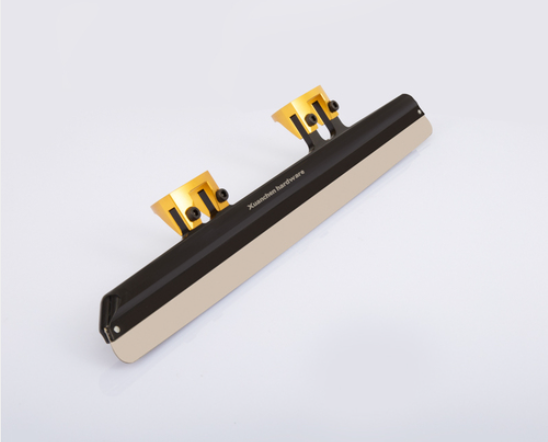On the track of the Winter Olympic Games, people feast their eyes on ice events such as speed skating, short-track speed skating, ice hockey and figure skating. In order to win medals, in addition to the athletes' own skills, some external equipment also plays a key role. Skates are the core equipment, and its quality has a direct impact on the performance of athletes.

Short Track speed ice skates racing
What is a skate?
Skates are not real knives, but steel knives under skates, which are the most important parts of skates. When using traditional skates, the skates must be lifted after pedaling, so that the balance can be better controlled and the friction will not be increased by rubbing against the ice, but this action increases the athletes' unnecessary work, and the distance of pedaling is also limited.
With the refinement of the events of the Winter Olympic Games, skates are becoming more and more diversified. according to their structure and sports characteristics, skates can be roughly divided into three categories: figure skates, speed skates and ice skates. Figure skating emphasizes flexible movement, so the front end of the skate has cutter teeth, which makes it easy to change the direction of skating. Short-track speed skating bends are sharp and many, so the blade of the skate will be shorter, thus reducing the ice contact area.
High-quality skates generally have the basic necessary characteristics, such as wear resistance, corrosion resistance, working face suitable for different ice hardness, light weight, less late polishing times, frequent jumping, sliding and not easy to connect with the soles and so on.
High-end skate material
High-end skates need to use powdered metallurgical steel. As its name implies, this kind of steel is a kind of high-speed steel formed by atomization of molten steel through high-pressure inert gas or high-pressure water, then pressed at high temperature and high pressure, and then sintered.
The biggest advantage of high-speed steel is that it has the absolute best sliding speed and wear resistance. the general texture of steel is softer, and sometimes it needs to be re-polished three to five times after a race. With this kind of steel, you can finish the whole game or even longer, and you only need to polish it once. So high-speed steel is very suitable for professional competitions, such as speed skating, short-track speed skating and figure skating.
How is the blade designed?
Unlike speed skates, figure skates have shorter blades and have teeth at the front, which can help athletes jump and rotate and increase friction with the ice. Small differences in blades make a big difference on the ice. The surface treatment technology of skates is very important. High-end blades use the highest quality steel and the latest laser technology to provide sharper edges and world-class accuracy and uniformity.
High-end blades are scientifically hardened to get the best skating edges and precision grinding to provide you with an unparalleled feeling on the ice.
Why do you want to cut the edge
When the knife is calcined, the iron or steel on the surface will oxidize or have a high carbon content and become brittle. To cut the blade is to grind these off at the edge of the knife so that the steel part is exposed, so that the skates will be sharper.
The cutting methods of figure skates, ice skates and speed skates are different. Figure skates and ice skates need to be slotted, while speed skates need to be smoothed.

Accessories-sharpening jig
Why sharpen the knife?
In the process of skating, you will slowly wear out the blade, the blade will be rounded, no longer sharp, you may skate without force, skating will be very tired, the speed will slow down, can not accelerate. Especially in the corner, the brakes will be affected, easy to fall. Sharpening the knife is to sharpen the blade to make your skating more handy.
Improve the smoothness of the blade.
High-quality blades have high mirror finish, better durability and longer blade life. Blades with poor surface treatment (tremor marks, ripples, etc.) actually cause more friction with ice during taxiing than when the bottom of the blade is completely smooth and clean. In order to maximize taxiing, it is important that you apply a smooth and clean finish to the bottom of the blade during the last knife sharpening.

